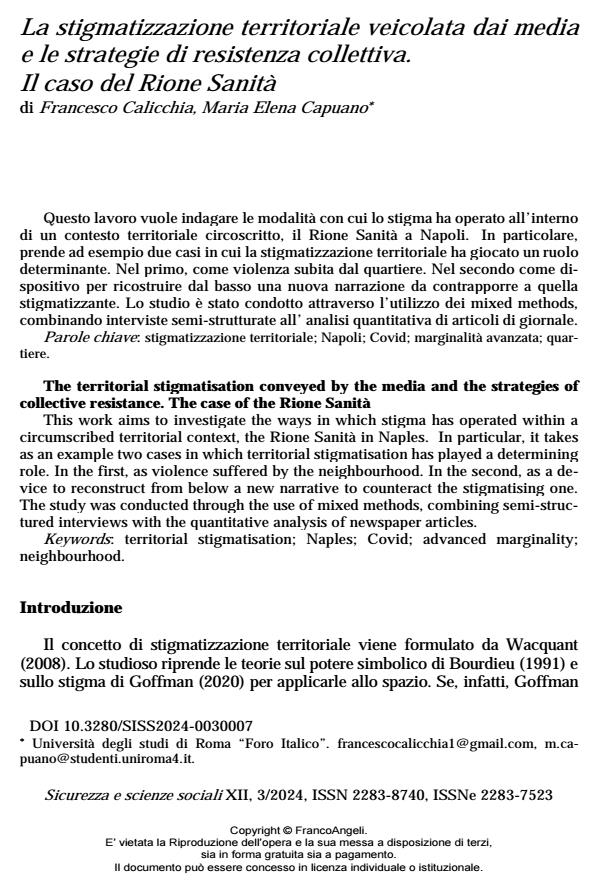The territorial stigmatisation conveyed by the media and the strategies of collective resistance. The case of the Rione Sanità
Journal title SICUREZZA E SCIENZE SOCIALI
Author/s Francesco Calicchia, Maria Elena Capuano
Publishing Year 2024 Issue 2024/3
Language Italian Pages 17 P. 74-90 File size 169 KB
DOI 10.3280/SISS2024-003007
DOI is like a bar code for intellectual property: to have more infomation
click here
Below, you can see the article first page
If you want to buy this article in PDF format, you can do it, following the instructions to buy download credits

FrancoAngeli is member of Publishers International Linking Association, Inc (PILA), a not-for-profit association which run the CrossRef service enabling links to and from online scholarly content.
This work aims to investigate the ways in which stigma has operated within a circumscribed territorial context, the Rione Sanità in Naples. In particular, it takes as an example two cases in which territorial stigmatisation has played a determining role. In the first, as violence suffered by the neighbourhood. In the second, as a device to reconstruct from below a new narrative to counteract the stigmatising one. The study was conducted through the use of mixed methods, combining semistructured interviews with the quantitative analysis of newspaper articles.
Keywords: territorial stigmatisation; Naples; Covid; advanced marginality; neighbourhood.
Francesco Calicchia, Maria Elena Capuano, La stigmatizzazione territoriale veicolata dai media e le strategie di resistenza collettiva. Il caso del Rione Sanità in "SICUREZZA E SCIENZE SOCIALI" 3/2024, pp 74-90, DOI: 10.3280/SISS2024-003007